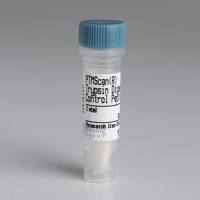Use of Aequorin for G protein-Coupled Receptor Hit Identification and Compound Profiling
互联网
278
G protein-coupled receptors (GPCRs) represent the largest class of targets in drug discovery, one-third of all marketed drugs are active at GPCRs and drugs targeted at GPCRs are marketed in virtually every therapeutic area. GPCRs can be classified by virtue of their coupling to second messenger signaling systems. In the last decade functional evaluation of Gαq-coupled GPCRs has been enabled by advances in fluorescence dye-based methodologies and detection instrumentation. Investigations into the bioluminescence of jelly fish in the early 1960s isolated the photoprotein aequorin that required only the addition of calcium to generate a luminescent signal. The recent development of sensitive detection platforms with integrated fluidics for liquid handling has revived interest in bioluminescence as an alternative to chemical fluorophore-based detection for characterizing the pharmacology of this target class. In this chapter we describe a detailed methodology for the development and execution of bioluminescence apoprotein aequorin-based screens for hit identification and structure–activity relationship compound profiling and highlight the opportunities and challenges associated with this technique.









